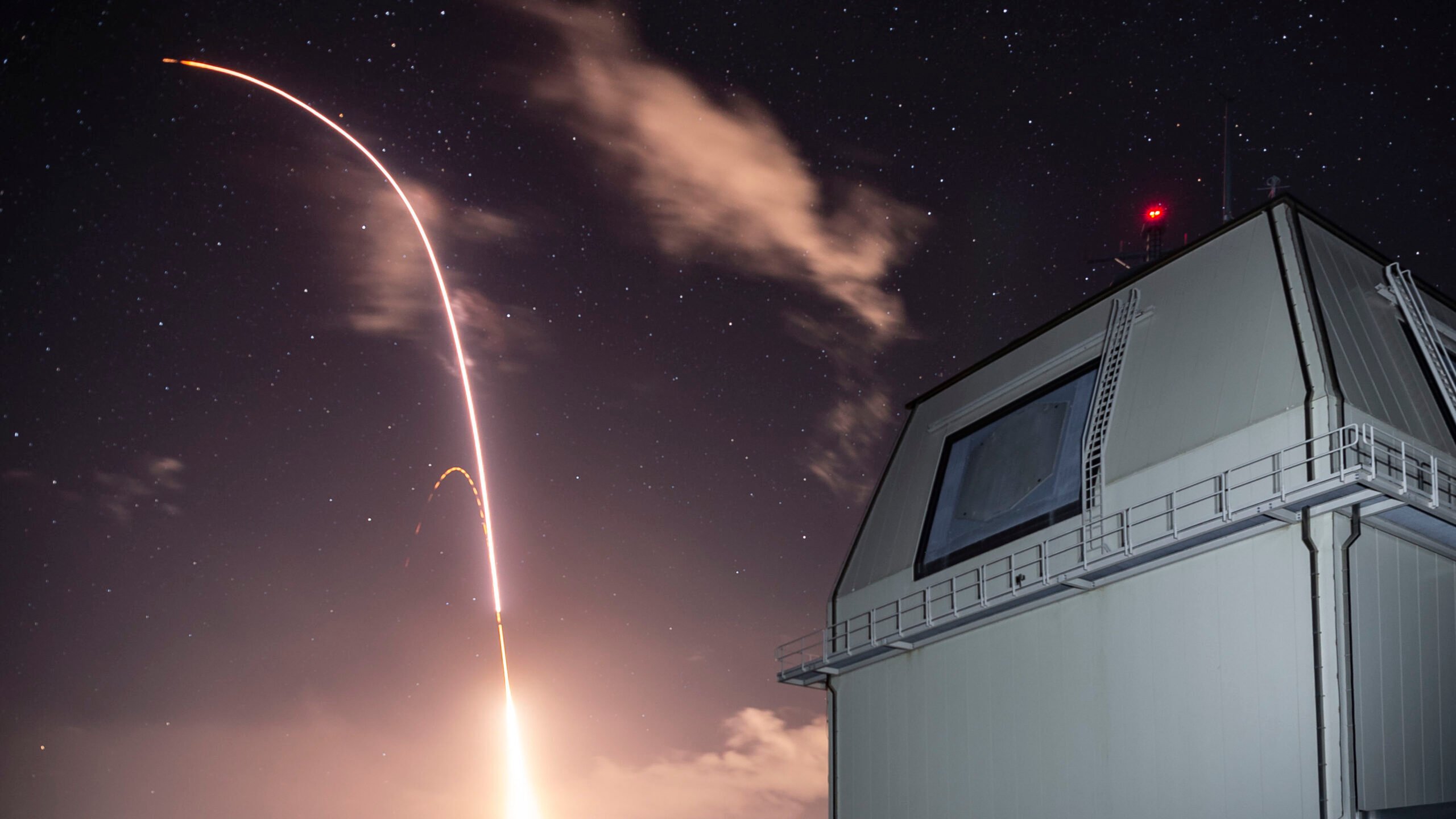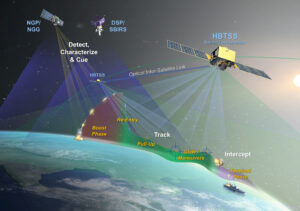
A Standard Missile-3 Block IIA missile launches from the Aegis Ashore Missile Defense Test Complex at Pacific Missile Range Facility in Kauai, Hawaii, Dec. 10, 2018.
WASHINGTON: The Missile Defense Agency’s race to develop new sensors capable of tracking hypersonic missiles from space is close to ticking off a key milestone, with both contractors expected to begin “bending the metal” at the end of this month, according to agency and company officials.
“We are on track for on-orbit prototype demonstrations with two space vehicles in 2023,” Mark Wright, agency spokesperson, told Breaking Defense Wednesday.
The Hypersonic and Ballistic Space Sensor (HBTSS) program is aimed at building a constellation of satellites in Low Earth Orbit (between about 100 kilometers and 2,000 kilometers up) that can keep tabs on maneuvering hypersonic missiles flying below the range of today’s ballistic missile detection satellites and above the radar of terminal-phase targeting systems.

The Hypersonic and Ballistic Tracking Space Sensor would track hypersonic missiles in during their glide phase. (Northrop Grumman)
The HBTSS satellites would be cued by the Space-Based Infrared System (SBIRS) and Defense Support Satellites — and in future the Next-Generation Overhead Persistent Infrared System satellites — that detect the infrared plumes from missile launches. The HBTSS sensors would track the missiles in their high-speed glide phase, then “hand off” targeting coordinates to shooters such as the Navy’s Aegis Ballistic Missile Defense system and the Army’s Theater High Altitude Area Defense interceptors.
Both contractors, Northrop Grumman and L3Harris, are moving into engineering, manufacturing and development of prototypes on schedule, company officials said. MDA down-selected the two firms in January to complete Phase 2B of the HBTSS program which runs through the launch of the two prototype medium field-of-view sensors. L3Harris was awarded $121 million; Northrop Grumman, $153 million.
Northrop Grumman already has passed critical design review (CDR) of its technical approach to the Hypersonic and Ballistic Tracking Space Sensor (HBTSS) prototype, the company announced Wednesday.
“What that means is now we can move into the production and manufacturing phase, bending the metal and putting the hardware together, and getting into payload and then vehicle level integration and test on our way towards delivering the vehicle and launching it,” Mike Ciffone, program director at Northrop Grumman Space Systems, told Breaking Defense.
The plan is to launch the prototype in early 2023, he said, after which MDA will conduct some six months of on-orbit demonstrations. “And then at that point, the Missile Defense Agency can choose to continue doing additional testing or end the program,” Ciffone explained.
L3Harris is also on track for a 2023 prototype launch, a spokesperson told Breaking Defense, although the company has yet to complete CDR.
Wright said MDA plans to “conduct the CDR with L3 during the week of Nov. 15, 2021.”
What happens after the demonstrations, however, is yet to be determined.
“MDA will have two primes with two space vehicles to use as on-orbit demonstrators as part of this phase of the program,” Ciffone said. “They have not yet made a decision in terms of subsequent phases for an objective system — their strategy for how many, whether they want to do subsequent down-select, or maintain multiple primes. That decision has not been made by MDA, and so I’d have to defer to them.”
“It is premature to discuss timing for the full constellation,” Wright said.
MDA requested $256 million for HBTSS prototyping in fiscal 2022, and both sides of Capitol Hill have fiercely championed the effort over the past couple of years.
“We’ve seen strong support for the program,” Ciffone noted.
HASC chair backs Air Force plan on space Guard units (Exclusive)
House Armed Services Chairman Mike Rogers tells Breaking Defense that Guard advocates should not “waste their time” lobbying against the move.



























